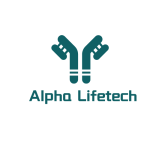Title: A Cell-Free Nanobody Engineering Platform Rapidly Generates SARS-CoV-2 Neutralizing Reagents
Introduction
The study presents CeVICA, a cell-free nanobody discovery platform that utilizes ribosome display to efficiently identify and optimize SARS-CoV-2 neutralizing nanobodies. This method bypasses traditional in vivo immunization and cell-based expression systems, significantly accelerating the discovery of effective nanobodies for therapeutic use.
Key Methodologies
Library Construction & Selection
The study utilized ribosome display, a cell-free in vitro selection method, to generate a large nanobody library.
Unlike phage display or yeast surface display, ribosome display allows entirely in vitro evolution, enabling rapid identification of high-affinity nanobodies.
Affinity Maturation
Following selection, high-affinity binders were identified and subjected to mutagenesis and optimization to further enhance their binding capacity.
Computational modeling and deep sequencing helped identify beneficial mutations.
SARS-CoV-2 Neutralization Assays
The best candidates were expressed and purified in a recombinant system.
In vitro, neutralization assays demonstrated high efficacy in blocking SARS-CoV-2 binding to its receptor, ACE2.
Key Findings
Rapid Selection and High-Affinity Binding
The CeVICA platform identified high-affinity nanobody binders within days, compared to weeks or months required by traditional methods.
Top candidates showed nanomolar to picomolar affinity, suggesting strong and specific interactions with the SARS-CoV-2 Spike protein.
Cell-Free Advantage
Eliminates the need for camelid immunization, making it faster and ethically preferable.
Overcomes limitations of cell-based expression, improving throughput and scalability.
Potential for Therapeutic Applications
Identified nanobodies are small, stable, and easily produced, making them suitable for inhalable or intranasal delivery, a promising approach for COVID-19 treatment.
The high affinity and specificity make these nanobodies viable candidates for passive immunotherapy or diagnostics.
Conclusion & Future Prospects
The CeVICA platform represents a breakthrough in nanobody discovery, providing a rapid, efficient, and scalable approach for neutralizing reagent development. Given its success in targeting SARS-CoV-2, it can be adapted for other emerging viral threats, making it a valuable tool in pandemic preparedness. Future research could focus on further optimizing stability, half-life, and delivery mechanisms to enhance clinical applications.






Comments